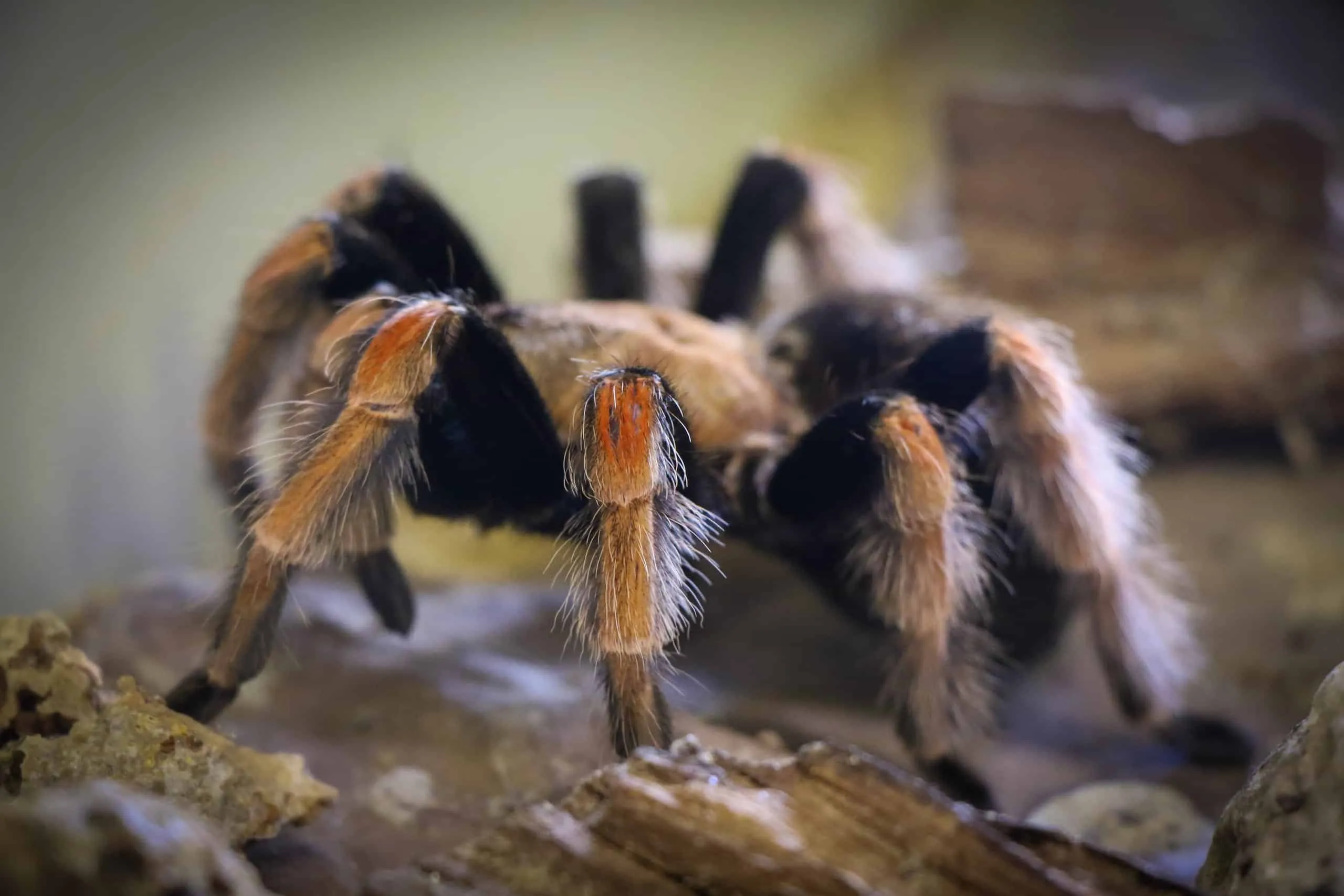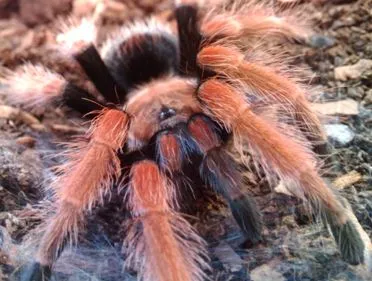Fireleg Tarantula Habitat Top 5 Facts
The Fireleg Tarantula (Brachypelma boehmei), with its striking red-orange leg markings, captivates tarantula enthusiasts worldwide. Understanding their natural habitat is crucial for both appreciating these magnificent creatures and ensuring their well-being in captivity. This article dives into the top 5 fascinating facts about the Fireleg Tarantula’s habitat, providing insights into their preferred living conditions and the challenges they face in the wild. From the geographic distribution to the types of threats they face, let’s explore the key characteristics of their natural environment.
Fact 1 Fireleg Tarantula’s Native Range
The Fireleg Tarantula is endemic to the Pacific coast of Mexico, specifically found in the tropical deciduous forests of the states of Guerrero and Michoacán. Their distribution is somewhat localized, making conservation efforts particularly important. This limited range highlights the vulnerability of this species to habitat loss and environmental changes. These regions are characterized by distinct wet and dry seasons, which significantly influence the tarantula’s behavior and activity levels throughout the year.
Geographic Distribution

Fireleg Tarantulas are primarily found along the Pacific coast of Mexico. The specific areas include the states of Guerrero and Michoacán, where the climate and vegetation provide the ideal environment for their survival. The tarantulas are not widely dispersed across these states but tend to inhabit specific microhabitats within these regions, such as areas with particular soil compositions or vegetation cover. This limited distribution underscores the need for targeted conservation strategies focused on preserving these unique ecosystems.
Climate Preferences
The Fireleg Tarantula thrives in a tropical climate characterized by distinct wet and dry seasons. The wet season, typically from May to October, brings heavy rainfall and increased humidity, which are crucial for their hydration and molting processes. The dry season, from November to April, sees significantly less rainfall and lower humidity levels. During this period, tarantulas may retreat to their burrows, reducing their activity to conserve energy and moisture. Understanding these climate preferences is essential for replicating their natural habitat in captivity.
Fact 2 Typical Terrestrial Environment
Fireleg Tarantulas are terrestrial creatures, spending most of their lives on the ground. Their habitat is characterized by a complex interplay of soil composition, moisture levels, and vegetation. They are well-adapted to living in burrows, which they either create themselves or find in existing structures. These burrows provide shelter from predators, extreme temperatures, and the elements. The specific characteristics of their terrestrial environment are critical to their survival and overall well-being.
Soil Composition

The soil in the Fireleg Tarantula’s natural habitat is typically a mix of sandy and loamy textures, providing a good balance of drainage and moisture retention. The presence of organic matter, such as decaying leaves and plant roots, enriches the soil, creating a favorable environment for burrowing and providing food sources. The soil composition also affects the structure of their burrows, influencing their ability to maintain stable temperatures and humidity levels. The ability to dig and maintain a burrow is essential for the tarantula’s survival.
Moisture Levels
Maintaining appropriate moisture levels in the soil is crucial for the Fireleg Tarantula’s health. In their natural habitat, the soil experiences cycles of wet and dry conditions, reflecting the distinct seasons. The tarantulas need sufficient moisture to hydrate and facilitate molting, while excessive moisture can lead to fungal infections and other health problems. The tarantula’s activity levels increase during the wet season and decrease during the dry season, which reflects their adaptation to the available moisture.
Fact 3 Vegetation and Cover
The vegetation and cover in the Fireleg Tarantula’s habitat play a crucial role in providing shelter, regulating temperature, and offering opportunities for prey. The presence of leaf litter, shrubs, and other ground cover contributes to a complex microhabitat that supports the tarantulas. This includes providing places to hide from predators and helping to regulate soil temperatures and humidity levels, vital to their survival. The type and density of vegetation significantly influence the tarantulas’ distribution and behavior.
Importance of Leaf Litter

Leaf litter is an essential component of the Fireleg Tarantula’s habitat. It serves multiple functions, including providing camouflage, retaining moisture, and offering a food source for the tarantula’s prey. The decaying leaves create a rich layer of organic material that supports a variety of invertebrates, which the tarantula preys upon. Additionally, leaf litter helps to insulate the soil, buffering temperature fluctuations and maintaining humidity levels, creating a stable environment.
Burrows and Hiding Places
Burrows are critical for the Fireleg Tarantula’s survival, providing protection from predators, extreme weather conditions, and sunlight. Tarantulas either dig their own burrows or use existing ones found in the environment. These burrows can be quite elaborate, with tunnels and chambers that help regulate temperature and humidity. The presence of adequate hiding places is vital for the tarantula’s sense of security and contributes to their overall well-being. The burrows also serve as molting locations where they are most vulnerable.
Fact 4 Co-existing Species
The Fireleg Tarantula shares its habitat with a variety of other species, including potential predators and prey. Understanding these interactions is crucial for appreciating the complex ecosystem in which they live. These relationships affect the tarantulas’ behavior, survival strategies, and population dynamics. The balance of these interactions determines the health and stability of the overall ecosystem.
Potential Predators

Several predators pose a threat to the Fireleg Tarantula, including birds, lizards, snakes, and larger mammals. These predators can target tarantulas in their burrows or when they are out foraging. To avoid predation, Fireleg Tarantulas have developed various defense mechanisms, such as urticating hairs, which they can flick at threats. Their secretive nature and preference for hiding in burrows also help them evade predators, increasing their chances of survival.
Prey Availability
The Fireleg Tarantula primarily feeds on insects, such as crickets, beetles, and other invertebrates found in its habitat. The availability of prey is crucial for the tarantula’s growth, health, and reproduction. The tarantula’s hunting behavior is an essential part of its survival strategy, and they typically ambush their prey from within their burrows or from concealed locations. Seasonal changes in prey availability directly impact the tarantulas’ activity levels and foraging habits.
Fact 5 Habitat Threats and Conservation
The Fireleg Tarantula faces several threats to its natural habitat, including habitat loss and the illegal pet trade. Conservation efforts are essential to protect these magnificent creatures. By understanding the challenges they face, we can better contribute to their preservation. Protecting their natural habitats is crucial to ensuring the survival of the species.
Habitat Loss

Habitat loss due to deforestation, agriculture, and urbanization is a significant threat to the Fireleg Tarantula. As their natural habitat is destroyed, the tarantulas lose their homes and food sources, leading to population decline. The clearing of forests for human development reduces the available area for the tarantulas, limiting their ability to find mates, and establish territories. Protecting and restoring their habitat is critical to ensuring their survival in the wild.
Conservation Efforts
Several conservation efforts are underway to protect the Fireleg Tarantula. These include habitat preservation, sustainable land management practices, and regulations to control the illegal pet trade. Captive breeding programs also play a role in supplementing wild populations and educating the public. Supporting conservation organizations and advocating for the protection of their natural habitat can make a difference. These efforts are crucial for the long-term survival of this species, ensuring they continue to thrive in their natural environment.
In conclusion, understanding the Fireleg Tarantula’s natural habitat is key to appreciating these beautiful creatures. From their native range in Mexico to their specific needs for soil, vegetation, and interactions with other species, every aspect of their environment impacts their survival. By recognizing the threats they face and supporting conservation efforts, we can help protect these amazing spiders for future generations.
